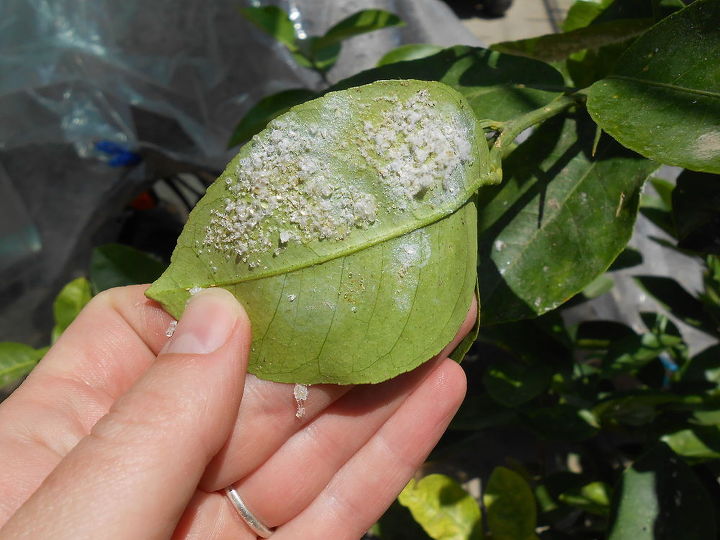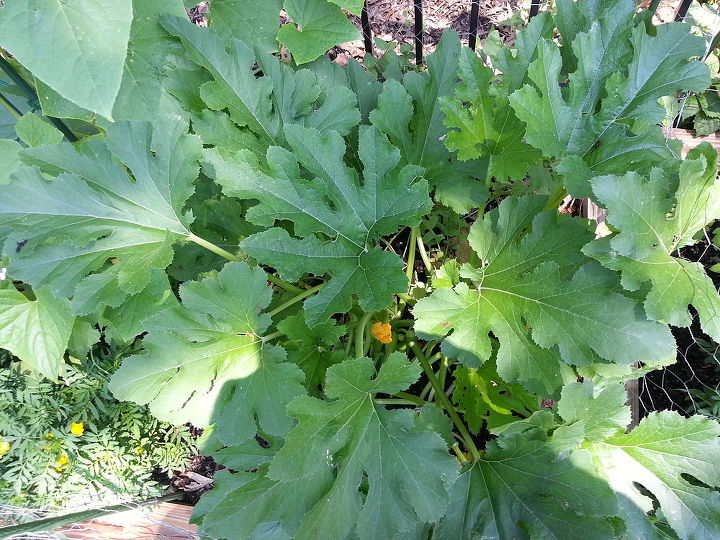Citrus Newbie...what is this?

-
Ayudar a responder a esta pregunta ...Aqui en España se llama cochinilla algodonosa y es dificil de quitar, hay que podar, quemar lo podado y utilizar un producto específico
 Maripaz Gallardo Moreno
on Oct 09, 2014
Helpful Reply
Maripaz Gallardo Moreno
on Oct 09, 2014
Helpful Reply -
-
Gracias Maripaz. Sabes que producto usan?
 AMamani
on Oct 09, 2014
Helpful Reply
AMamani
on Oct 09, 2014
Helpful Reply -
-
English please
 Judy Ford
on Oct 09, 2014
Helpful Reply
Judy Ford
on Oct 09, 2014
Helpful Reply -
-
It does look like a type of scale. Frequently natural predators, including some types of beetles and parasitic wasps, will take care of a scale outbreak. If a majority of the leaves on your tree exhibit this, however, you may need to use a horticultural oil. Make sure you follow label directions, as some types of oil should not be applied when outside temperatures are high. Going forward, your citrus tree needs to be on a regular fertilization program (three to four applications per year) of a product formulated specifically for citrus.
 Douglas Hunt
on Oct 09, 2014
Helpful Reply
Douglas Hunt
on Oct 09, 2014
Helpful Reply -
-
Judy Ford, according to Google Translate: "Here in Spain it is called cottony cushion scale and is difficult to remove, must be pruned, trimmed and burn it using a specific product." AMamani then asked if she knew what the product is.
 Wendy
on Oct 09, 2014
Helpful Reply
Wendy
on Oct 09, 2014
Helpful Reply -
-
I use an insecticidal soap on my lime tree. Just google it and you'll find lots of recipe options for making it yourself
 Annie P
on Oct 09, 2014
Helpful Reply
Annie P
on Oct 09, 2014
Helpful Reply -
-
As a frutal tree you need organic or natural process, first with disposable gloves Wash the tree with lemon, Apple cider vinegar, water and a little of glicerine soap. Then put this mix (without the soap) in a bottle and re apply Every week in a month it shouldn't appear again, always see surrounding plants.
 Maria Sandoval
on Oct 09, 2014
Helpful Reply
Maria Sandoval
on Oct 09, 2014
Helpful Reply -
-
You can wash the leaves and scrub them with a toothbrush. To avoid more to come, you can spray a solution of smoked cigar leaves (the filling of cigars - you buy them smoked, in rolls, to make home-made cigars): you boil 1 liter of water with 20-30 grams of the cigar leaves for a minute; leave it to cool and spray it. It's a natural pesticide.
 Ana Paula Cortez
on Oct 09, 2014
Helpful Reply
Ana Paula Cortez
on Oct 09, 2014
Helpful Reply -
-
I have this; it is called Citrus Leafminer and is very destructive to citrus trees; the new growth is attacked by this bug and is best not to trim away the damaged growth until fall, when the bug goes dormant. You can buy a product from ISCA technologies (www.iscatech.com) that will gather the bugs but there is no cure.
 Cathy Williams
on Oct 09, 2014
Helpful Reply
Cathy Williams
on Oct 09, 2014
Helpful Reply -
-
You can try one mixture of one cup of raw milk+three cups of plain water and spray it on the affected citrus tree weekly.Hope this will help. Ashok Khare Pune , India
 Ashok Anant Khare
on Oct 09, 2014
Helpful Reply
Ashok Anant Khare
on Oct 09, 2014
Helpful Reply -
-
Thank you to everyone for the suggestions!
 AMamani
on Oct 10, 2014
Helpful Reply
AMamani
on Oct 10, 2014
Helpful Reply -
-
It appears that you have citrus mealy bug (planococcus citri). You can view several pictures including magnifications on Google image by searching for planococcus citri. Here in Florida mealy bug is usually controlled without chemicals by natural predators (lady bugs, etc.) If chemical control is necessary, you can get information from: edis.ifas.ufl.edu/cg004. As a Florida Master Gardener, we recommend using chemicals as a last resort because chemicals can also kill the good insects.
 Lindy Hopp
on Oct 12, 2014
Helpful Reply
Lindy Hopp
on Oct 12, 2014
Helpful Reply -
-
It is mealy bug, mix some dish washing liqui in water and spray 2-3 times a week for about a monthall over including roots
 Cinzanno
on Oct 12, 2014
Helpful Reply
Cinzanno
on Oct 12, 2014
Helpful Reply -
Related Discussions
GNATS - How to get rid of them?
Somehow my house and garden got tiny gnats that killed my fuchsia plant and fly everywhere. I have tried ALL the Web recommendations - soap and oil dishes, sand in th... See more
Marigolds growing! Should I pinch the buds?
My marigold plants are growing. I heard that pinching the buds until Autumn will allow them to grow without killing the plant. Is this true?
Growing garlic
Growing our first garlic, should we wait until the leaves are drying out before we pick it? Husband picked first one today along with our first potatoes.
How to keep mice out of your garden?
Hi everyone, I have mice in my garden destroying my vegetables and I have also noticed them in the barn and shed. Please can someone tell me how to prevent them from ... See more
What's the best flower/plant to grow in Texas?
I know that opinions vary, but what's your opinion?!I have great luck w Rosemary plants. Green all year long.
What can I use citrus fertilizer for other than citrus trees?
I have a bag of citrus fertilizer but no citrus trees, what other plants can i use this on??
Squash Plants Large and Healthy and no Squash Growing?
2nd Season in a ROW! Squash plants growing large and healthy leaves and the stems near the roots are looking healthy and turning dark green, getting flowers that grow... See more




